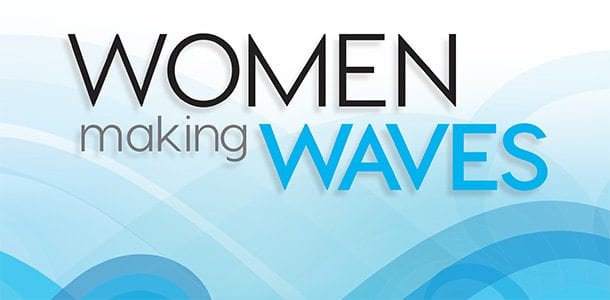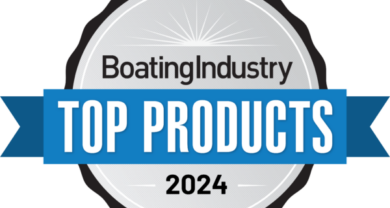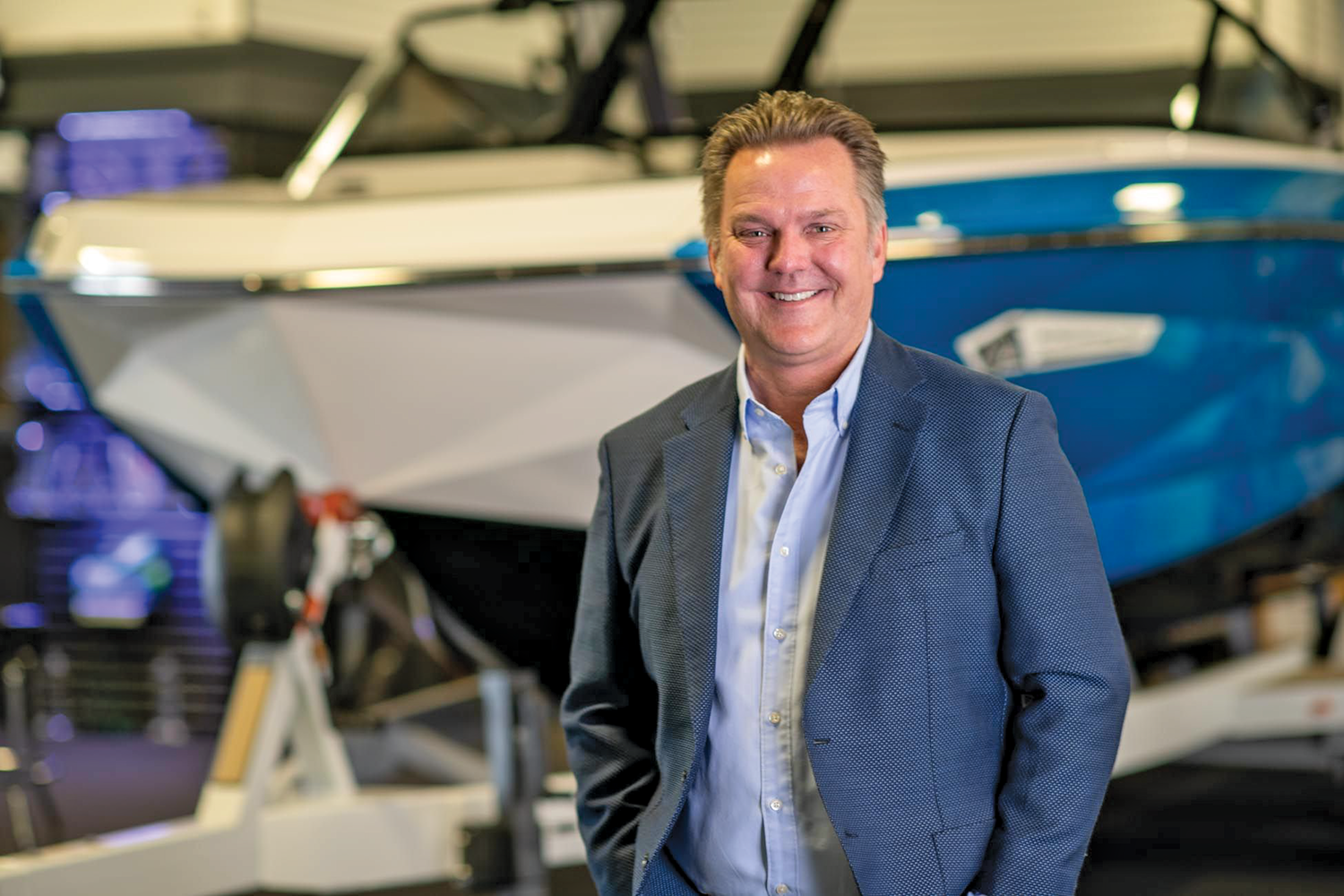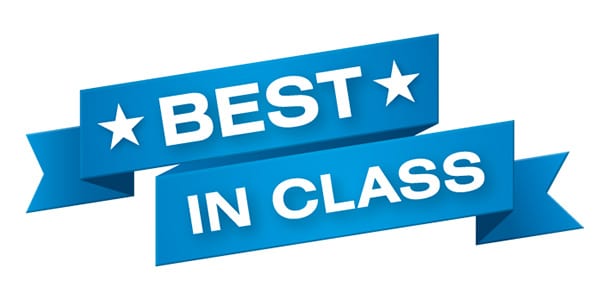6 strategies for success
As momentum gathers behind the Grow Boating campaign, the industry sees the possibility of a fresh chance to capture new boaters in its future. In response, it is ramping up attempts at self-improvement.
Marina operators are in a unique position to help the industry better satisfy its customers because they spend the most time with boaters. Their success stories – and those of the companies and associations that serve the marina market – are perhaps most telling about where the industry needs to focus its attention.
Whether encouraging boaters to boat more often, preserving and growing water access, raising the value of marina services or boosting customer service, the following marinas and marina-related organizations are clued in to what it takes to meet boaters’ needs while growing their own businesses.
The following represents a sampling of marina business best practices.
Sailing toward success
Elliott Bay Marina was losing customers to its competition.
And its former customers were honest about why they were leaving. The competition had a very active sailing program.
“We weren’t putting on parties for them,” explains Dwight Jones, general manager. “We weren’t giving them something to do.”
Now, that has changed.
This past summer, the marina invested $40,000 in creating its own summer sailing series. And while it ended up covering $16,000 of the cost itself, the investment was more than worth it, Jones confirms.
“The promotion was three-fold,” he says. “One, to attract new boaters. Two, to get people interested in boating in downtown Seattle. And three, to give our existing tenants a reason to stay at the marina.”
All three objectives have been accomplished, according to Jones. In fact, the series exceeded expectations. Organizers anticipated that they would be lucky to attract 40 boats per race. The final race in the series attracted 67.
The marina now intends to run the series every year, and having attracted the attention of new and existing sponsors, expects that it will be a revenue producer beginning this year.
One of the reasons for the series’ success may be linked to its unique approach. For one, it’s not a real race. The winner is not necessarily the boat to cross the line first. The names of every boat that crosses the line within the designated time frame are thrown into a hat. The winner of that evening’s prize – a free meal at a local waterfront restaurant – is whichever name is drawn.
“So many people are intimidated by a race,” says Jones. “We even told people, if you’re not going to finish in time but want to be included in the drawing, run your motor. It gives people an excuse to use their boat, that’s the key.”
The series was also opened up to people without a boat. Fifteen to 25 people per race asked to participate and were placed as crew on other people’s boats.
Some folks have accused Elliott Bay Marina of acting like a yacht club, something Jones says isn’t far off.
“The sense of community, you can’t put a price tag on that. I want to have a relationship with my boaters like they do at a yacht club,” he explains. “If the only relationship takes place on the 10th of the month when they write you a check, you’re in danger.”
Turning outside in
Unlike many marine businesses, Westrec Marinas is an outside-in company, says Alex Laidlaw, southeast area vice president.
It seeks out customer feedback and uses it to meet and exceed customers’ expectations, rather than looking inside the company to make decisions.
“In the early 90s, Bill Anderson realized the marina business was a storage rather than hospitality-run business, and we had to change that,” Laidlaw explains.
In response, Westrec created a formal, hospitality-based customer-service training program for its employees similar to that offered by Disney or the Ritz. Through the program, employees must take a six-hour course when they join Westrec and a refresher each year thereafter.
“I live and die by the eight-hour employee every day of the week,” says Laidlaw. “Our customers aren’t interfacing with me and my management staff.”
The company also offers customer survey cards in many locations throughout the marina, from the retail store to the bathrooms and gas pumps. Bad complaints are good, he says, because they offer an opportunity to improve.
The results go deeper than happy customers.
“I never want to compete on price,” he comments. “I want to be able to compete on service and charge the highest price I can.”
And that is exactly what Westrec is able to do.
Ultimately, those high prices allow the company to invest in offering more amenities and mean it doesn’t have to “squeeze every dollar” out of its retail, gas and yacht repair businesses.
“People are willing to pay for convenience and service,” says Laidlaw. “I can charge more, which impacts my bottom line.”
Fighting for the future
The industry at large just now seems to be waking to the reality of water access and its potential impact on the future.
Without access, there is no future for our industry.
In South Florida, however, this is hardly news.
Water access has been on the Marine Industries Association of South Florida’s radar screen for at least five years, according to Frank Herhold, executive director.
Despite that, Herhold hopes that other communities will recognize the importance of addressing access even earlier, before it becomes a problem.
There currently is no vacant waterfront property in Broward County, and the marine industry faces constant competition for waterfront from the development community, which seems to have bottomless pockets, Herhold explains.
MIASF has tackled the access issue on several fronts, establishing an annual Marine Summit, which gathers local elected officials, planners and economic development experts together with the industry to discuss and plan for its future; assembling a Marine Master Plan for retaining and growing the marine industry within the county; lobbying for legislation that would help preserve the number of slips, ramps and parking spaces for boaters; and more.
What it comes down to is working with the media, local government and the community to establish the value of marine businesses to the region, to raise awareness about the issues that threaten their future and to brainstorm solutions that ultimately benefit the community and the industry.
While Broward County is unique in that the marine industry is such a large contributor to the local economy, all boating communities could benefit from starting this process now, even if access isn’t currently a problem.
“There are no easy answers,” says Herhold. “But solving the problem is a top priority.”
Fueling customer satisfaction
To its marina customers, ValvTect is more than just a manufacturer, it’s a problem solver.
Its Marine Fuel Program, developed three years ago, has helped participating marina operators turn customer complaints into compliments and boost their fuel business during a time when high prices have been driving down many marinas’ sales.
As a supplier, it comes down to really understanding your customers’ business, according to Jerry Nessenson, president of ValvTect. That includes knowing your customers’ problems and determining how you can be of highest value to their operations.
The problem facing marina operators was two-fold. For one, offering fuel at marina docks is expensive. As a result, marinas were forced to charge higher rates for fuel, despite the fact that it often came from the same companies that supply gas stations. Boaters didn’t understand that, and thus many felt ripped off by the marinas.
The second part of the problem was that the fuel sold at marinas was in fact designed for cars and trucks, not boats. Marine engines use up to 20 times the fuel per hour used by a car engine, work under much heavier loads and at higher rpm, and are forced to store fuel for considerably longer periods of time. Many boaters buy fuel additives to provide better performance and protection for their engines, which adds even more expense to the fueling process.
The fuel additive company has changed all that for nearly 400 marinas. Its fuel program allows marinas that meet ValvTect’s standards to offer ValvTect-brand fuel designed for marine engines. Boaters using the marine fuel are less likely to compare it to auto fuel because it is a different brand and because they now no longer need to use additives. Therefore, they tend to be much more satisfied with their marina experience.
“What we’ve found is that the operators that really understand the marina business see that it’s a hospitality business,” explains Nessenson. “Their competition isn’t necessarily another marina. It’s the RV or the swimming pool.”
When ValvTect’s marketing program is added into the picture, it’s no surprise that ValvTect Certified Marinas tend to sell more fuel than the average marina. A company survey in August found that 33 percent of certified marinas had higher fuel sales in the previous six months than the same period of 2003 and 33 percent had flat sales. During that same period of time, the marine industry as a whole saw a 15- to 20-percent reduction in fuel sales.
Landing loyalty
Harbour Towne Marina is a family-friendly place in more than one way.
It creates many opportunities for family fun throughout the year, and it makes children’s causes the focus of its charitable donations.
With families making up about 75 percent of its customer base, that just makes good sense. However, Harbour Towne’s efforts stand out from its competitors, and customers notice.
The result is loyalty that extends as far as its customers’ children, who often grow up to become boaters like their parents, explains Gary Groenewald, vice president of Westrec Marinas, which owns the Dania, Fla.-based facility.
Among the family activities it offers is a National Marina Day celebration, which includes fishing lessons, tournaments and games for the kids. In addition, the marina hosts an annual rendezvous from Fort Lauderdale to Key Largo that is designed to be family friendly. Kids can snorkel, participate in fishing clinics or use the marina’s personal watercraft. These are just two of many family-oriented parties and events the marina offers each year.
Harbour Towne also has created its own non-profit organization, Helping Hands of Harbour Towne, proceeds from which go mainly toward children’s causes. In particular, the marina puts on an annual fishing tournament to benefit local children with medical problems.
Most recently, the tournament raised over $22,000 to help support the family of Emily Adamson, a three-year-old girl who last year was diagnosed with neuroblastoma, an aggressive childhood cancer affecting the tissues of the nervous system.
During the tournament, a young boy won the junior angler award, for which he received a $300 check. He decided, however, to donate the full amount back to the Adamson family, says Groenewald. One by one, the other tournament award winners took his example and walked up to the podium to hand in their checks.
“That’s the kind of thing we like to promote,” he explains. “That kid is a customer for life.”
Love at first sight
Grove Harbour Marina recently learned a valuable lesson: you don’t always have to spend a lot of money to make a lot of money.
In the early fall, the Miami, Fla.-based marina put the finishing touches on a dry dock that features lift and storage capacity for large boats. While the marina offers a wide range of services, General Manager Alan Lima wanted to get the word out specifically to high-performance boat owners.
Soon thereafter, Lima hired Miami-based Info-Link Technologies to help it put together a targeted marketing campaign. With Info-Link’s help, the marina created a postcard that offered 100 gallons of gas to new slip rental customers. It then created a list of prospective customers, narrowing it down by boat type, boat size and zip code.
While the postcard was mailed out during last year’s particularly rough hurricane season, Grove Harbour received 40 calls during the first 10 days and another 20 calls during the next 10 days. Eighteen of the callers were solid potential customers.
Within 30 days of the mailing, the marina signed up three new customers, each worth $7,200, for a total of $21,600 – after spending only $2,100 on the entire project.
Now that’s a return on investment anyone could learn to love.




